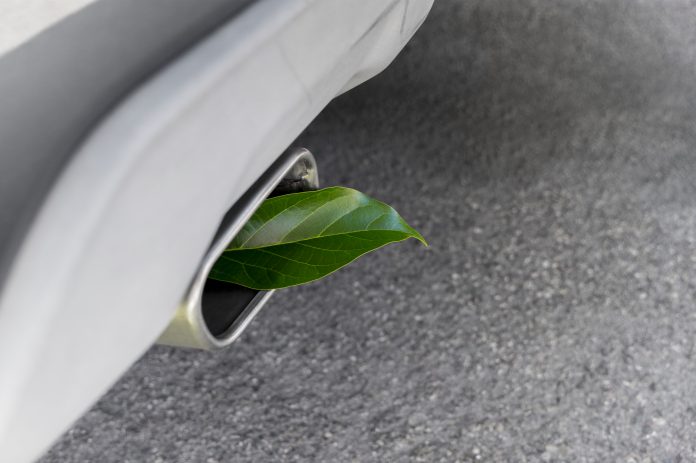Peter O’Driscoll, Managing Director at RingGo, has spoken to many local councils about removing parking machines, encouraging electric vehicle use and using data to impact traffic patterns. Here, he has compiled a list of his top 10 steps to lowering carbon emissions
In today’s climate conscious culture, taking a stand on how you are going to become carbon neutral is becoming commonplace. From Microsoft making a pledge to be carbon negative by 2020, to Sainsbury’s commitment to £1 billion to reach the carbon neutrality goal set by the Paris Climate Change Agreement, it’s clear that everyone is trying to come up with plans to reduce carbon emissions to reach the holy grail of net zero.
While these big organisations may be able to dedicate time, people and, most importantly, money to this aim, there are many things that local authorities and private parking operators can do to make a significant impact.
Emissions Based Parking
The biggest thing in transport any of us can do is to swap to an electric vehicle. City Science suggests this alone will have the effect of reducing carbon emissions by 52%.
The introduction of emissions based parking (EBP) has already reduced the most polluting diesel vehicles by 13-20% in areas where it has been implemented. Specifically, Westminster is seeing estimated journey reductions of 250,000 each year due to EBP and Central London nitrogen dioxide has dropped 38% in the two years since EBP was introduced.
It’s quick, easy and inexpensive to implement EBP – where variable parking tariffs are automatically charged based on a vehicle’s emissions. Not only this, but motorists are given a message each time they park, highlighting the polluting impact of their vehicle, which in itself is a significant driver of change.
Cutting machines
Removing parking machines has countless environmental benefits. Fewer physical resources, obviously but also significantly fewer journeys for cash collections, banking, maintenance, vandalism and repair. Plus less electricity usage and simply saving paper by eliminating the need for tickets. The benefits all mount up.
Reducing one cash collection van, driving 20,000 miles per annum, will save 10 tonnes of carbon dioxide each year.
Eliminate location circling
Solutions that help motorists avoid circling to find a space can significantly reduce journey time and minimise pollution. Listing the closest, available parking spaces, showing electric vehicle charging points, and encouraging navigation to the desired location by the least congested route, considerably reduces emissions.
Park & Ride for the environment
As ULEZ’s and CAZ’s increase, parking hot spots will gravitate further and further out of town and city centres. To get ahead of this potential issue, identify new locations for commuters, promote existing Park & Ride sites with cashless payments and provide flexible solutions to make the transportation combination work for everyone. This not only reduces emissions and improves air quality, but also minimises traffic in city centres.
Install and Promote EV Charging Points
To increase electric vehicle (EV) purchase and usage, motorists need to know there are plenty of charging points, so they don’t worry about being stranded. Local authorities need to invest in installation and promote availability to help normalise and encourage EV usage.
Cash in on cashless
Most people already use cashless applications, but increasing usage in the parking industry carries many of the same benefits as reducing machines. This can be encouraged by making cashless options cheaper, introducing cashless only zones, extending charging areas further out of town, scrapping scratch cards and swapping physical permits for virtual ones.
Use big data to drive big change
Car parks that use technology to enable payment are constantly providing data on usage, pricing, emissions and enforcement, but often these insights sit somewhere untouched. By tapping into this data, you can understand parking habits, drive better outcomes, promote underutilised areas and determine where to site EV charging points. All this helps incentivise use of more environmentally friendly options.
Virtually incentivise vehicle change
Offering virtual solutions like ePermits reduces physical journeys in a number of ways. By putting all processes online, councils can limit staff processing time and eliminate the need for physical distribution of collateral. ePermits also provide a great way to offer discounts and incentives for cleaner driving cars.
Go digital to reduce congestion
Many cities struggle with parking and congestion during special events. Using digital solutions to pre-emptively plan for the congestion, together with additional parking solutions can keep you on track with your carbon minimising goals.
Offset alongside reducing
While reducing impact is a valiant goal, it can take time. Finding other ways to offset carbon emissions can be a great short term solution, specifically:
- Planting trees – one tree offsets a tonne of carbon
- Encouraging flexible hours/remote working reduces staff footprint
- Providing (electric) scooters or bicycles for local journeys rather than always taking a car
- Encouraging use of public transport
The journey to carbon neutral is a long road and it is unlikely to be without its hurdles, but there are lots of small things we can all put into action quickly and affordably to start making a difference today.











